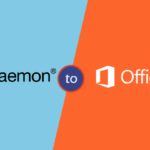In the constantly evolving digital landscape, individuals and businesses are always seeking solutions to optimize their workflow and enhance productivity. Many are finding that the key to unlocking a smoother, more efficient workflow lies in the powerful functionalities offered by PDF editing software. This comprehensive guide seeks to answer the pivotal question: “How to use PDF editing software to improve workflow?” By delving into the manifold features of these applications, we explore how they foster better productivity, seamless collaboration, and overall workflow optimization.
Simplified Document Revision
As an essential tool for workflow optimization, PDF editing software has revolutionized the way we approach document revisions, making the process more streamlined and user-friendly. Let’s break down the aspects that make it a powerhouse for improving productivity:
Text Editing and Formatting:
In the past, editing the text in a PDF document was considered a challenging task. However, modern PDF editing software has eradicated this issue, offering seamless text editing and formatting capabilities. Now, users can effortlessly modify the content directly within the PDF, bypassing the need to locate and alter source files, which in turn saves precious time and effort, and maximizes workflow efficiency.
Image Manipulation:
PDF editing software provides a robust platform for handling images within documents effortlessly. Whether it’s about adding new visuals, removing outdated images, or resizing graphics to fit the document’s layout better, these functionalities streamline the process significantly, especially when updating marketing materials or product catalogs.
Advanced Annotation Tools
Utilizing advanced annotation tools in PDF editing software can be a transformative experience. These tools not only facilitate better comprehension but also enhance collaboration among team members. Here, we delve deeper into the vital annotation tools that foster improved workflow:
Highlighting and Underlining:
PDF editing software has made the review process of documents more streamlined with features like highlighting and underlining. These tools are especially beneficial when reviewing extensive documents, allowing users to emphasize key points easily, which aids in quick referencing and fosters better productivity.
Sticky Notes and Comments:
In an environment where seamless collaboration is the key to success, the sticky notes and comments feature of PDF editing software shines brightly. It enables team members to communicate directly within the document, sharing insights, asking questions, or providing feedback without altering the original content, thus creating a cohesive and collaborative work environment.
Drawing Tools:
For those who prefer a more visual approach to annotations, drawing tools come in handy. These tools allow users to draw shapes, arrows, or even freehand drawings to illustrate their points more vividly, fostering better understanding and collaboration. You may also read Improve your digital presence

Improved Document Security
Harnessing PDF editing software means amplifying document security substantially. With features designed to protect sensitive information, these tools offer peace of mind and safety. Let’s examine how:
Password Protection:
Security is a paramount concern in the digital age. PDF editing software for workflow optimization includes password protection features, restricting access to authorized personnel only. This function safeguards confidential information, thus ensuring that critical data remains secure from unauthorized access.
Redaction:
In scenarios where documents containing sensitive data need to be distributed on a broader scale, the redaction tool is indispensable. It allows for the permanent deletion of specific content, ensuring that it cannot be recovered, thereby preventing potential data breaches.
Watermarking:
Adding watermarks to a document is another way PDF editing software enhances security. It helps in protecting intellectual property by adding visible or invisible watermarks, indicating ownership and preventing unauthorized reproduction or distribution.
Streamlined Collaboration
One of the standout features of PDF editing software is its ability to foster streamlined collaboration. It offers a plethora of features designed to make teamwork more cohesive and productive. Let’s delve into these aspects:
- Real-time Editing: Real-time editing stands as a beacon in maximizing workflow efficiency with PDF editing software. Through cloud integration, multiple users can work on a document simultaneously from different locations. This real-time collaboration significantly cuts down the time for revisions and approvals, fostering swift project completions and seamless collaboration.
- Electronic Signatures: In a world that is moving at a fast pace, the electronic signatures function of PDF editing software showcases its potential for better productivity. It enables users to add signatures to documents electronically, expediting the approval process and avoiding delays caused by waiting for physical signatures.
- Version Control: Managing different versions of a document can be a cumbersome process. However, with version control features, users can track changes efficiently, ensuring that everyone is working on the most recent version of the document, preventing confusion, and enhancing collaboration.

Enhanced File Organization
Efficient file organization is crucial in maintaining a smooth workflow. PDF editing software offers tools that assist in keeping documents well-organized and easily accessible. Let’s explore these features in detail:
Merging and Splitting:
The merge and split tools of PDF editing software are vital in managing multiple PDFs related to a single project. These features allow for combining various files into one cohesive document or extracting specific sections from a larger PDF, promoting better organization and smoother workflows.
Bookmarks and Hyperlinks:
Navigating through extensive documents can often be a daunting task. However, by adding bookmarks and hyperlinks, users can create a navigational structure that allows for easy access to different sections, enhancing the user experience and fostering better productivity.
Bates Numbering:
For legal and business professionals dealing with numerous documents, the Bates numbering feature proves to be a boon. It helps in organizing documents by assigning unique identifiers to each page, making referencing and retrieval much more straightforward.
Easy Integration with Other Tools
Understanding how to use PDF editing software to improve workflow often involves exploring its integration capabilities with other tools. These integrations facilitate a more fluid and cohesive working environment. Here we explore these integrations:
Export and Conversion:
PDF editing software offers the convenience of exporting and converting documents to various formats such as Word, Excel, or PowerPoint. This feature enhances the flexibility in document management, allowing users to repurpose or edit content using different applications, which contributes to a smoother workflow.
Optical Character Recognition (OCR):
OCR technology within PDF editing software stands as a revolutionary feature, transforming the way we handle scanned documents. It converts images of text into editable formats, facilitating easy editing, searching, or repurposing, thereby driving productivity upwards.
Integration with Cloud Services:
Modern PDF editing software offers integration with various cloud services, facilitating easy storage and retrieval of documents. This integration ensures that users can access their files from any location, fostering mobility and flexibility in work processes.
Tailoring PDFs for Professional Presentation
Beyond the functionalities for editing and collaboration, PDF editing software can be a powerful tool in creating professional presentations and documents. Here we explore how:
- Creating Interactive Forms: PDF editing software allows users to create interactive forms, facilitating the collection of data in a structured and organized manner. These forms can be used for various purposes, including surveys, registrations, and feedback collection, enhancing business processes and customer engagement.
- Adding Multimedia Elements: To make documents more engaging and interactive, users can add multimedia elements such as videos, audio files, and animations. This functionality enriches the content, making it more appealing and informative to the audience.
- Design and Layout Tools: For individuals looking to create visually appealing documents, the design and layout tools of PDF editing software come in handy. These tools allow for customization of document appearance, including setting backgrounds, adding headers and footers, and adjusting page layouts, fostering a professional presentation.
https://youtu.be/r46z4Fuh-Go
Conclusion
In conclusion, adopting PDF Editing Software stands as a strategic move for individuals and businesses aiming to foster streamlined, efficient, and productive workflows. As we’ve explored, these versatile tools play a pivotal role in the modern workspace, facilitating better productivity and seamless collaboration through their various features and functionalities. By embracing PDF editing software, users set themselves on a path of success, navigating through daily tasks with newfound ease and efficiency. The ongoing advancements in this software promise even more innovative features in the future, making it a must-have tool for anyone seeking to optimize their workflow and achieve greater heights in their professional endeavors.


